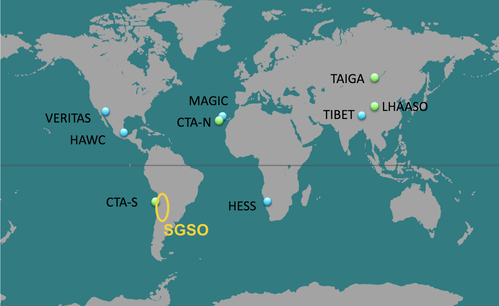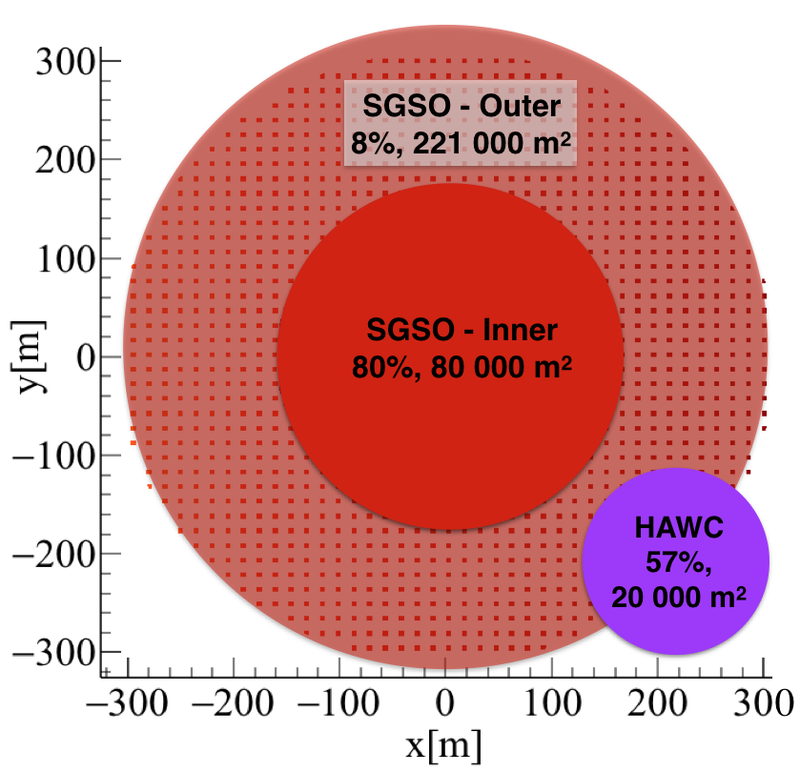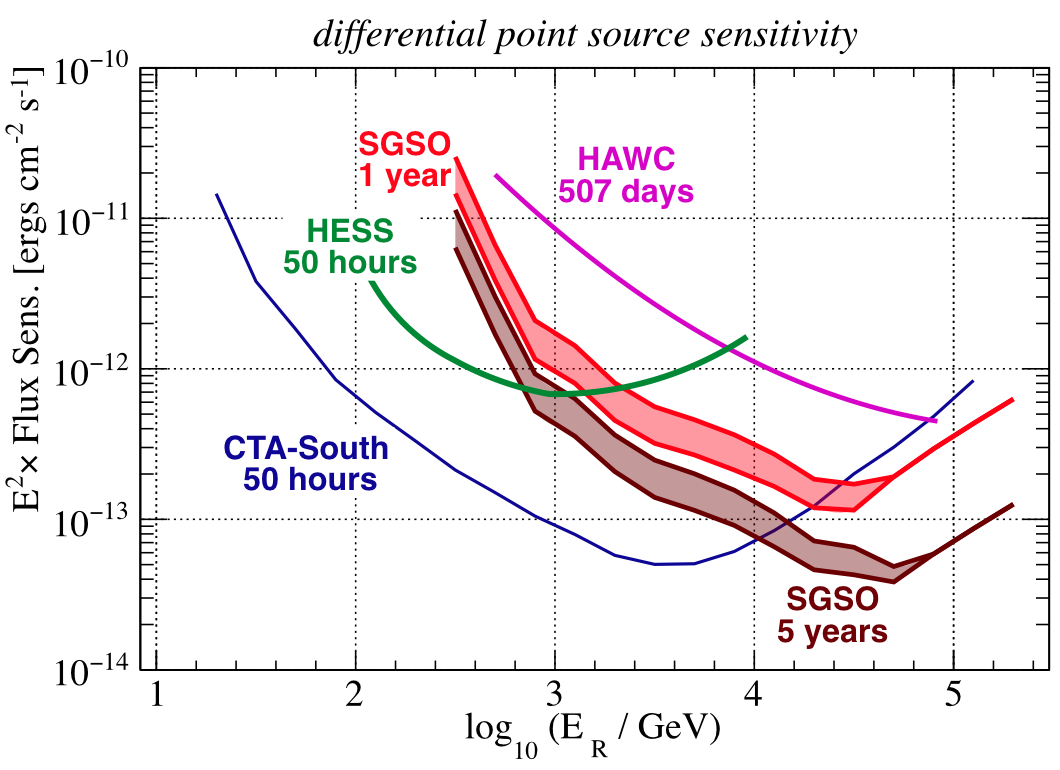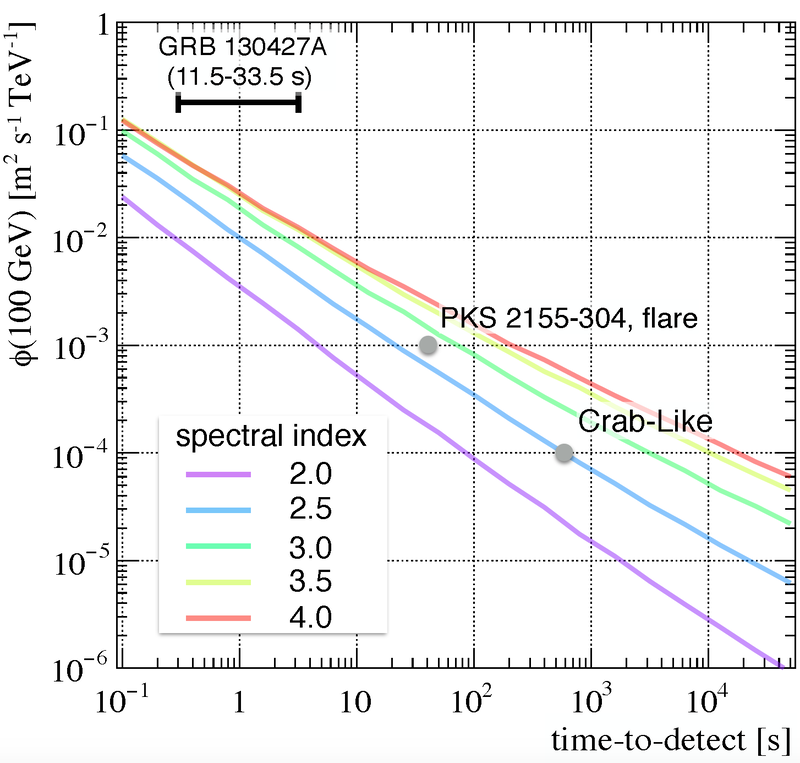|
High-energy astrophysics has seen quite some amazing revolutions over the last years. To name just a few: we detected Gravitational Waves (GWs) and could link them to Gamma-Ray Bursts (GRBs), we detected high-energy neutrinos and could link (at least one of them) to a flaring blazar, we scanned the Galactic Plane discovering a wealth of new sources emitting VHE gamma-rays and we could finally observe VHE gamma-rays from a GRB. These and many more discoveries are not only great achievements of the past: more importantly they open new windows to the high-energy universe and thus promise even more exciting observations and future discoveries. To fully exploit these possibilities, we obviously need the right instruments and observatories. But fortunately the future is also bright in this respect: the VIRGO and LIGO interferometers are being improved continuously and will path the way towards 3rd generation instruments like the Einstein Telescope and LISA. The IceCube neutrino telescope is continuing operations while IceCube-Gen2, GVD and KM3NeT are being prepared and built. The SVOM and later the ATHENA (and hopefully the THESEUS) X-ray satellites are being constructed, the pathfinders of the Square Kilometer Array (SKA) radio observatory have started operations and the full SKA is approaching fast. In the VHE gamma-ray domain, the current Imaging Air Cherenkov Telescopes (H.E.S.S., MAGIC and VERITAS) are shifting their focus more and more to transient and multi-messenger studies and operations are assured for the next few years when the Cherenkov Telescope Array (CTA), which is currently entering its construction phase, will take over. The HAWC observatory is producing novel and surprising results at an amazing rate, while the next-generation observatory LHAASO is being constructed. While this global landscape of observatories is certainly extremely broad, there is at least one crucial piece missing: a large field-of-view VHE gamma-ray observatory in the Southern hemisphere. While many arguments lead to this conclusion, the main ones are:
Following the success of the HAWC air shower array, the idea to build a next-generation observatory in the Southern hemisphere has been floating around the community for several years. Different groups started to develop various design ideas and started building prototypes to valide them. With the aim of structuring these efforts, the Southern Gamma-ray Survey Observatory (SGSO) Alliance was founded about a year ago. Its aim is to form a community of scientists to work together towards the definition and implementation of a next-generation, large field-of-view high-energy gamma-ray observatory in the Southern hemisphere. The Alliance (and yes, the reference to the Star Wars universe is on purpose ;-)) already attracted more than 110 friends and colleagues from 18 countries around the globe (cf. right map above). Over the last year I helped coordinate an effort to define the science case of such an observatory. Put in simple terms, the aim of this enterprise was to agree on and outline a baseline of what science we want to do with such an instrument. Many people contributed to the discussions and the writing of what is now called the "Science Case for a Wide Field-of-View Very-High-Energy Gamma-Ray Observatory in the Southern Hemisphere". The paper is available on the arXiv today... A few illustrative performance figures of SGSO used for the study of the science case. In summary, we believe that the Southern Gamma-ray Survey Observatory, a next-generation high-energy gamma-ray observatory in the Southern hemisphere, will provide unprecedented observations of high-energy phenomena in the universe. These can be roughly divided into four main categories:
The ambitious goals of SGSO will be made possible by important developments and design studies. Various detector and array designs are currently studied with simulations and validated with prototypes. In parallel, several candidates for an optimal site for the future observatory have been identified and are being assessed. More details in our extensive paper: https://arxiv.org/abs/1902.08429arxiv.org/abs/1902.08429 Exciting times ahead... Lets see where this adventures takes us...
0 Comments
|
AuthorMyself ;-) Archives
January 2024
Categories
All
|





 RSS Feed
RSS Feed